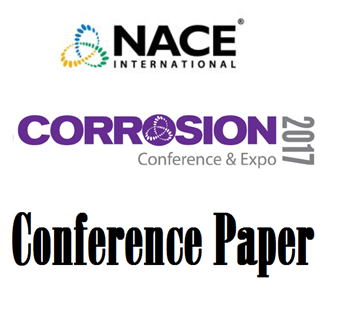Search
Individual Conference Papers
View as
Sort by
Display
per page
Effect of Side Groove Geometry on Crack Propagation Behavior and K1SSC in DCB Test
Product Number:
51321-16341-SG
Publication Date:
2021
$20.00
Effect Of Soil Environment On Hydrogen Embrittlement Behavior Of X60 Steel
Product Number:
51322-17705-SG
Publication Date:
2022
$20.00
Effect of Solution pH on Corrosion Product Layer Formation in a Controlled Water Chemistry System
Product Number:
51317--9160-SG
ISBN:
9160 2017 CP
Publication Date:
2017
$20.00
Effect Of Steel Microstructure And Corrosion Product Characteristics On Inhibition Performance Of Decanethiol Against TLC
Product Number:
51321-16581-SG
Publication Date:
2021
$20.00
Effect Of Steel Surface Profile Peak Density On Rust Creepage
Product Number:
51322-17584-SG
Publication Date:
2022
$20.00
Effect of Steel Surface Roughness on Coating Performance
Product Number:
51319-12830-SG
Publication Date:
2019
$20.00
Effect of Surface Conditioning on Corrosion Resistance Using New Vs. Traditional Abrasive Blasting Media Types
Product Number:
51220-291-SG
Publication Date:
2020
$20.00
Effect of surface contamination on the corrosion performance of thermally sprayed aluminium coating in synthetic seawater
Product Number:
51323-19138-SG
Publication Date:
2023
$20.00
Effect of Surface Hardness Distribution on SSC Propagation Behavior in Grade X65 Linepipe
Product Number:
51323-19238-SG
Publication Date:
2023
$20.00
Effect of Surface Imperfection affecting Long-term Durability of Coating Performance on Offshore Coating System
Product Number:
51319-12884-SG
Publication Date:
2019
$20.00
Effect of Surface Preparation of Coating Performance
Product Number:
41216-953-SG
Publication Date:
2016
$20.00
Effect of Surfactants on Inhibition Performance of Corrosion Inhibitors
Product Number:
51319-13448-SG
Publication Date:
2019
$20.00












